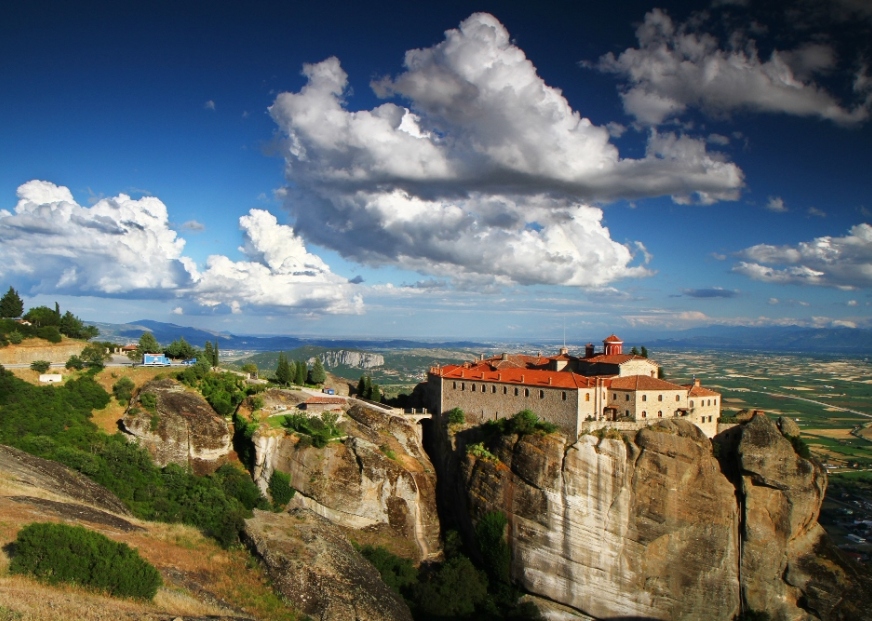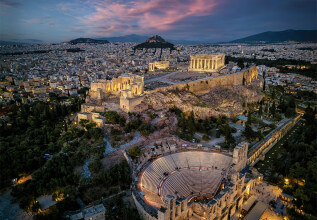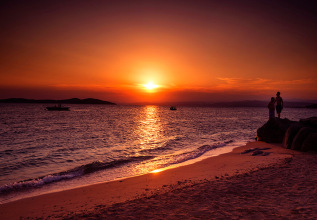4 MIN
TRAVEL TIPS
Meteora, the magnificent

 Through the centuries more than 24 monasteries were found in Meteora. Today, only six survive: the Holy Monastery of Transfiguration of Jesus, the Holy Monastery of Varlaam, the Holy Monastery of Rousanou, the Monastery of the Holy Trinity, the Holy Monastery of Saint Stephan and the Holy Monastery of Saint Nicholas Anapafsa. The Holy Monastery of Varlaam was found in 1518 by the brothers Nectarios and Theofanis Apsaras. It houses the two churches of the “Three Bishops” and “All Saints”, that are famous for their exquisite murals, some of them painted by Frangos Katelanos, a well-known 16th century greek painter. There, also, survives the monastery’s hospital, which remains nearly intact from the 16th century.
Through the centuries more than 24 monasteries were found in Meteora. Today, only six survive: the Holy Monastery of Transfiguration of Jesus, the Holy Monastery of Varlaam, the Holy Monastery of Rousanou, the Monastery of the Holy Trinity, the Holy Monastery of Saint Stephan and the Holy Monastery of Saint Nicholas Anapafsa. The Holy Monastery of Varlaam was found in 1518 by the brothers Nectarios and Theofanis Apsaras. It houses the two churches of the “Three Bishops” and “All Saints”, that are famous for their exquisite murals, some of them painted by Frangos Katelanos, a well-known 16th century greek painter. There, also, survives the monastery’s hospital, which remains nearly intact from the 16th century.
 The Holy Monastery of Rousanou leaps out because of its breathtaking surroundings. It is built on the most steep of the Meteora pillars and looks like a natural projection of this perpendicular rock. It was found in 1545 and its church, the Transfiguration of Jesus, preserves its original murals from 1561. The Monastery of the Holy Trinity was built in 1476 by the monk Dometios and its murals trace back in 1741. On the other hand, the Holy Monastery of Saint Stephan was built earlier, in the middle of the 14th century, shortly after the Holy Monastery of Transfiguration. Its murals are estimated to be some of the oldest in Meteora and date from 1501, while the monastery’s church has an elegant iconostasis, an excellent example of woodcarving of the late 18th century.
Last but not least, the Holy Monastery of Saint Nicholas Anapafsa was established in the 16th century by the Metropolitan Bishop of Larissa, Dionysios. Its a three-story building, just like the monastery of Rousanou, and its central church is decorated with murals painted by the famous greek painter of icons, Theofanis, in 1527.
The monasteries of Meteora host a large collection of rare manuscripts, books and precious saints’ remains. The most striking thing is that the monasteries’ cavities and hollows continue to reveal hidden manuscripts, saints’ remains and byzantine icons that prove the fame of this impressive orthodox complex, that competes the monasteries of Aghion Oros and the abbeys of Europe.
The Holy Monastery of Rousanou leaps out because of its breathtaking surroundings. It is built on the most steep of the Meteora pillars and looks like a natural projection of this perpendicular rock. It was found in 1545 and its church, the Transfiguration of Jesus, preserves its original murals from 1561. The Monastery of the Holy Trinity was built in 1476 by the monk Dometios and its murals trace back in 1741. On the other hand, the Holy Monastery of Saint Stephan was built earlier, in the middle of the 14th century, shortly after the Holy Monastery of Transfiguration. Its murals are estimated to be some of the oldest in Meteora and date from 1501, while the monastery’s church has an elegant iconostasis, an excellent example of woodcarving of the late 18th century.
Last but not least, the Holy Monastery of Saint Nicholas Anapafsa was established in the 16th century by the Metropolitan Bishop of Larissa, Dionysios. Its a three-story building, just like the monastery of Rousanou, and its central church is decorated with murals painted by the famous greek painter of icons, Theofanis, in 1527.
The monasteries of Meteora host a large collection of rare manuscripts, books and precious saints’ remains. The most striking thing is that the monasteries’ cavities and hollows continue to reveal hidden manuscripts, saints’ remains and byzantine icons that prove the fame of this impressive orthodox complex, that competes the monasteries of Aghion Oros and the abbeys of Europe.
Article by www.museummasters.gr


